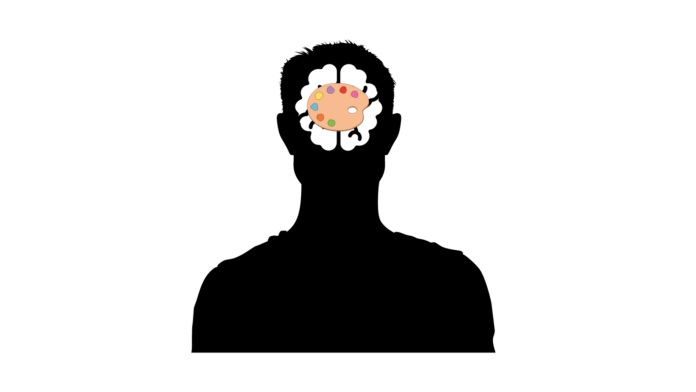This semester, St. Thomas University Mental Health introduced a new support group called Art for Anxiety, led by STU intern Lex Stephenson.
Starting on Jan. 24, the group of about ten students is two sessions in at the time of publishing. Stephenson said the group teaches students to cope with anxiety through creativity and that progress is already being made through art.
“People with anxiety tend to have unhelpful thinking patterns,” they said. “We were thinking about changing those thinking patterns. And when you change how you interpret a situation, then that will change how you feel about it.”
Each week, students in the group do art-based activities that teach about a psychological treatment called Cognitive Behavioural Therapy (CBT), which can be used to treat mental health conditions like anxiety and depression. In their last session on Jan. 31, students made “emotion samplers” that double as fans, to help them identify their emotions and cool down physically while they’re at it.
Stephenson says CBT considers “the environment of a situation” alongside one’s thoughts and feelings about a situation to determine what to do. Looking at things like the physical sensations in one’s body and their behaviour can help them change those unhelpful thinking patterns.
“It’s an evidence-based intervention for lots of different things, but [for] anxiety in particular it works well,” they said.
The idea for the group came when Brittany Sprague, the head of STU Mental Health and Stephenson’s supervisor, suggested they combine their passion for art with their work.
Aside from working towards her second master’s degree in counselling at the University of New Brunswick, Stephenson is also a professional artist. They’ve done a variety of installation pieces, including a collaborative queer installation that hung on the gates of the Saint John City Market — their hometown.
“I have things I want to say but there isn’t ways to communicate it other than art, so I guess it just kind of came out of me.”
Working through personal struggles using art is not just something they teach to students, they have lived it. Stephenson said their first art piece was titled “Lava” — a take on the game “the floor is lava”. The piece was about alcoholism, which they were working through at the time.
“[“Lava”] was like talking about triggers with addiction […] so it was kind of like I didn’t have a way to express it except through art,” they said. “When I got into recovery, art was a big thing for me.”
Stephenson recognizes the power that art has to heal and help people work through difficult things, just as it has helped them.
“A big part of it is allowing people to express themselves and discover their creativity. I think a lot of people end up suppressing their creativity, which can be unhealthy.”
So far, Stephenson said running the group on top of their other work with STU Mental Health has been fulfilling.
“It brings a lot of joy into my work at the moment, because I do individual counselling and I do the walk-in counselling,” they said. “The group is a little hint of joy in my week,” they said.
“I’m hoping that the people in the group find it helpful and helps reduce their anxiety and people gain some coping skills.”

